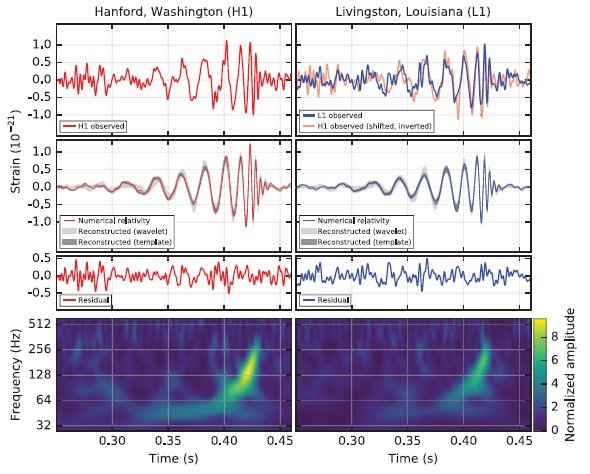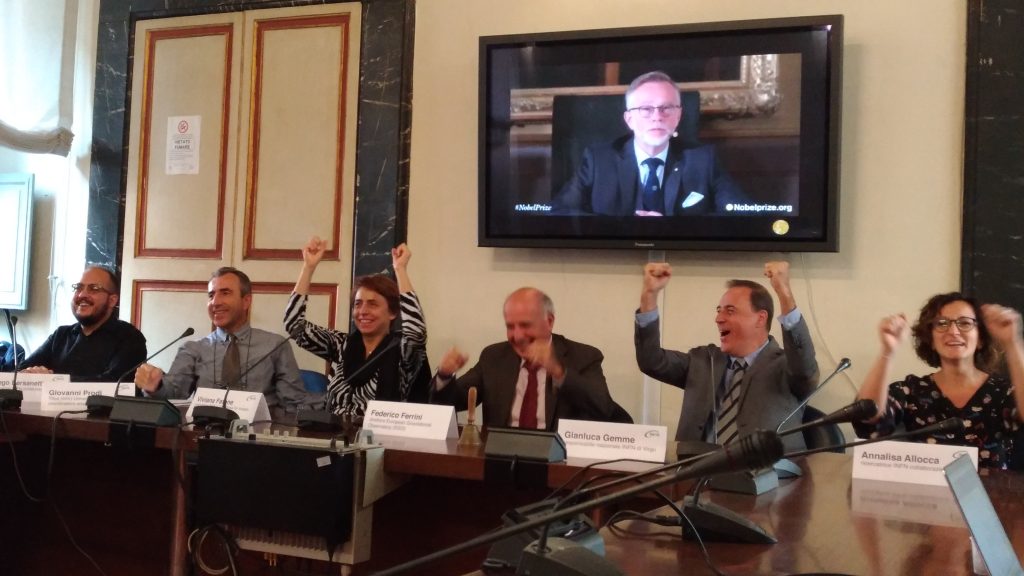The First Detection(s)

Gravitational waves were first detected a century after their prediction by A. Einstein: this happened on the 14th of September 2015, when the two Advanced LIGO detectors caught a signal that looked very much like the theoretical model of a gravitational wave signal produced by two black holes of mass 29 and 36 times the mass of our Sun, merging one billion light years away from Earth and forming a black hole of 62 solar masses. This signal is called GW150914. At the time the Virgo detector had not yet joined the observing run, as the upgrades to bring it to the goal sensitivity had not yet been completed, but LIGO and Virgo scientists had been working as one collaboration for almost ten years, sharing expertise, plans and data.
The match between the expected waveform and the detected signal was so impressive that, before announcing the discovery, the LIGO – Virgo Collaboration felt the need to figure out whether a “fake” signal could have somehow been planted in the data by someone with the intention of discrediting the Collaboration, but in the end that turned out to be highly unlikely. Even the last remaining doubt was lifted when, on December 26, 2015, the detectors captured another gravitational wave signal. Gravitational waves were real and had been detected for the first time in history!

Credits: Veronica Nicosia
The detection of GW150914 was announced to the world on 11th February 2016 with several worldwide joint press conferences by the LIGO – Virgo Collaboration; a scientific paper was published simultaneously in Physical Review Letters. The Royal Swedish Academy of Sciences has decided to award the Nobel Prize in Physics 2017 “for decisive contributions to the LIGO detector and the observation of gravitational waves” to Rainer Weiss, Barry C. Barish and Kip S. Thorne. The prize, given in record time, was the ultimate recognition of the importance of this discovery in the history of not just astrophysics but science at large.
GW150914 is important not only as the first ever detected gravitational wave but also because it proved the existence of black holes heavy as tens of solar masses, the fact that they can form binary systems and that such systems can merge within the lifetime of the Universe. Furthermore it is a great test of General Relativity in presence of very strong gravitational fields.
For the first time astrophysical events could be studied not only through electromagnetic waves or particles, but with a completely different approach, i.e. by analyzing the deformation of spacetime that they caused. This has completely revolutionized astronomy in the following years, as a whole new window was finally opened on the universe. Another important aspect of this revolution is how it allowed us to focus on heavy objects such as black holes, otherwise incredibly difficult to study. With gravitational waves it is now possible to study black holes in large numbers and detail, allowing for population studies and more.
On the 1st of August 2017 the Advanced Virgo detector finally joined the LIGO detectors for the second observing period O2. The first joint observation of the three detectors happened on August 14th: a gravitational wave signal coming from a black hole merger, named GW170814. It was Virgo’s first signal and the proof that the detector had reached high enough sensitivity to catch gravitational waves. But the best part was yet to come, and would come just three days later…learn more here.